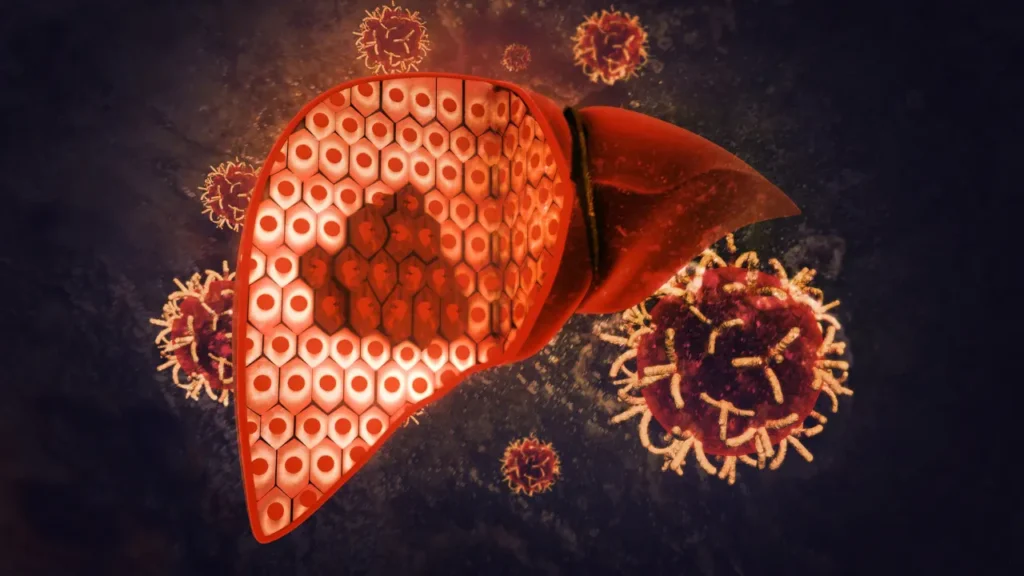A perennial herb native to the Mediterranean area called black horehound (Ballota nigra) is frequently utilised for its therapeutic benefits. The plant, which belongs to the Lamiaceae (mint) family, is well-known for its potent flavour and unusual aroma. Traditional medicine has traditionally used black horehound, primarily for the treatment of digestive and respiratory issues. Scientific studies have validated black horehound’s effectiveness in a number of areas, and there has been an increase in interest in the health advantages of the herb in recent years.
You May Also Like:
5 Great Nootropic Herbs for Energy, Focus, and Productivity
Black Mustard: Benefits, Dosage, Side Effects, Drug Interactions, and Other Important Information
Black Horehound: Benefits, Dosage, Side Effects, Drug Interactions, And Other Important Information is an original (NootropicsPlanet) article.
Nature of Black Horehound
A perennial herb native to the Mediterranean area called black horehound (Ballota nigra) is frequently utilized for its therapeutic benefits. It is a tough plant with hairy, wrinkled leaves and tiny white or pink flowers that can reach a height of 1 meter. The plant is frequently used as an ornamental plant in gardens and is typically found growing in rocky or sandy soils. Black horehound is a plant that is normally gathered in the summer when it is in full bloom. Its leaves and stems are used as medicines.
Some people may find black horehound’s powerful, bitter flavor and distinctive aroma repulsive. Although its high content of biologically active substances, including essential oils, flavonoids, and phenolic acids, which support its medicinal properties, is reflected in its strong flavor and odor.
Health Benefits of Black Horehound
Historically, black horehound has been used to treat respiratory illnesses such as coughs, colds, and bronchitis. Given that it has been discovered to have expectorant and anti-spasmodic effects on the respiratory system, scientific data supports its usage for these disorders. Black horehound dramatically lessened the intensity of symptoms like cough, expectoration, and chest pain when compared to a placebo in a trial of people with acute bronchitis. According to a different study, using black horehound and thyme together significantly lessened the severity of acute bronchitis symptoms.
Additionally, black horehound has been used to treat digestive issues like bloating and indigestion. It has been discovered to have digestive system-carminative and antispasmodic actions, which can aid in easing discomfort. When compared to a placebo, black horehound significantly lessened symptoms like nausea, bloating, and abdominal pain in a study of people with functional dyspepsia (indigestion).
It has been discovered that black horehound has a relaxing impact on the nervous system, making it effective for lowering anxiety and stress. In comparison to a placebo, black horehound was found to significantly lessen anxiety symptoms in a study of people with generalized anxiety disorder. In another study, it was discovered that black horehound helped healthy people with their stress-related symptoms like weariness and irritation.

Chemistry of Black Horehound
Numerous biologically active substances, such as phenolic acids, flavonoids, and essential oils, can be found in black horehound. Monoterpenes like carvacrol and thymol, which have been found to have anti-inflammatory and antibacterial activities, are prevalent in the essential oil of black horehound. Agenin, luteolin, and quercetin are three of the flavonoids present in black horehound, and studies have shown that they have antioxidant and anti-inflammatory properties. Black horehound has also been shown to contain phenolic acids, including rosmarinic acid and caffeic acid, which are thought to be a part of what gives it its therapeutic benefits.
Physiological Mechanisms of Action of Black Horehound
Due to the high concentration of biologically active substances, including phenolic acids, flavonoids, and essential oils, black horehound has physiological mechanisms of action. These substances’ various impacts on the body and brain have been discovered to contribute to their therapeutic characteristics.
Carvacrol and thymol, two of the essential oils present in black horehound, have been discovered to have anti-inflammatory and antibacterial activities. These characteristics are thought to have a role in its ability to effectively cure respiratory disorders such as coughs, colds, and bronchitis. Black horehound has anti-inflammatory characteristics that can aid to lessen respiratory system irritation, which helps ease the symptoms of respiratory disorders. Black horehound’s antibacterial qualities can aid in the fight against respiratory infections, lowering the risk of consequences.
It has been discovered that the flavonoids in black horehound, including apigenin, luteolin, and quercetin, have antioxidant and anti-inflammatory properties. It is thought that these outcomes contribute to its effectiveness in treating digestive issues as well as anxiety and stress reduction. The body can be protected from oxidative damage by black horehound’s antioxidant qualities, which can lower the risk of developing chronic diseases including cancer and cardiovascular disease. The digestive system’s inflammation can be reduced by black horehound’s anti-inflammatory effects, which can ease the symptoms of digestive disorders.
It is thought that black horehound’s ability to relax the nervous system contributes to its effectiveness in lowering anxiety and tension. Its essential oils, flavonoids, and phenolic acids, which have been discovered to have a soothing impact on the nervous system, work together to produce this effect. Black horehound has a relaxing effect that can lessen the signs of stress and anxiety while also enhancing general health.
In conclusion, the high concentration of biologically active components found in black horehound, including essential oils, flavonoids, and phenolic acids, is what gives the herb its physiological effects. These substances’ therapeutic qualities are aided by their anti-inflammatory and antibacterial characteristics, antioxidant and anti-inflammatory actions, and relaxing effects on the nervous system.


Optimal Dosage of Black Horehound
The ideal black horehound dosage varies depending on a number of variables, including age, weight, and the ailment being treated. A daily intake of 2-3 g of dried black horehound leaf has been reported to be useful for respiratory disorders. A daily intake of 2-4 g of dried black horehound leaf has been found to be useful for stomach issues. A daily dose of 150–300 mg of black horehound extract has been demonstrated to be useful for reducing anxiety and tension.
Side Effects of Black Horehound
When consumed in accordance with authorized dosages, black horehound is usually regarded as safe. However, taking too much black horehound may result in negative side effects like nausea, vomiting, and diarhea. Additionally, people with liver or kidney disease should use black horde with caution because it may impair liver function and raise the risk of kidney damage.
Black horehound should not be used by expectant or nursing women because its safety in these groups has not been shown. Additionally, it’s critical to be aware that black horde may interact with sedatives, anti-anxiety drugs, and anticoagulants (blood thinners). Therefore, before taking black horehound, especially if taking other medications, it is crucial to speak with a healthcare professional.
Potential Substance Interactions with Black Horehound
Black horehound may interact with several medicines, such as anticoagulants, sedatives, and anti-anxiety drugs, as was previously mentioned. Black horehound may also interact with other supplements, such kava, increasing the risk of liver injury. Additionally, black horde may interact with alcohol, raising the risk of liver damage and other negative effects.


Best Use of Black Horehound
The ideal way to consume black horehound is as a dietary supplement in the form of extract, capsules, or dried leaves. Tea, syrups, and lozenges frequently contain it as a component. The individual and the condition being treated will determine the best way to employ black horehound.
Black horehound is best consumed as a tea or syrup for respiratory disorders since the steam from the tea can aid to release mucus and calm the respiratory system. In order to minimize bloating and ease digestive discomfort, black horehound is best taken as a pill or extract for digestive issues. Since black horehound has been found to have a calming effect on the nervous system, it is best used as a capsule or extract for anxiety and stress.
Black horehound dosage recommendations should be followed because exceeding them may have negative side effects or interact with other drugs and supplements. Before taking black horehound, it’s also a good idea to talk to your doctor, especially if you’re taking any other medications or supplements, are pregnant, or are nursing a baby.
Black Horehound:
Conclusion
In conclusion, black horehound has a long history of usage in traditional medicine and is a versatile, robust herb. It has been proven to be beneficial in treating digestive issues, anxiety, and stress. Its therapeutic effects are attributed to its high quantity of biologically active chemicals. The high concentration of biologically active components found in black horehound, including essential oils, flavonoids, and phenolic acids, is what gives the herb its physiological effects.
These substances’ therapeutic qualities are aided by their anti-inflammatory and antibacterial characteristics, antioxidant and anti-inflammatory actions, and relaxing effects on the nervous system. To ensure the safe and efficient use of black horehound, it is crucial to utilize it responsibly and under the direction of a healthcare professional.


References:
- Black Horehound: Uses, Side Effects, Interactions, Dosage, and Warning.” WebMD. Retrieved from https://www.webmd.com/vitamins/ai/ingredientmono-139/black-horehound
- “Ballota nigra L.” USDA PLANTS Database. Retrieved from https://plants.usda.gov/core/profile?symbol=BANI
- “Black Horehound.” Natural Medicines Database. Retrieved from https://naturalmedicines.therapeuticresearch.com/databases/food,-herbs-supplements/professional.aspx?productid=1082
- “Ballota nigra.” Global Biodiversity Information Facility. Retrieved from https://gbif.org/species/2841594
Important Note: The information contained in this article is for general informational purposes only, and should not be construed as health or medical advice, nor is it intended to diagnose, prevent, treat, or cure any disease or health condition. Before embarking on any diet, fitness regimen, or program of nutritional supplementation, it is advisable to consult your healthcare professional in order to determine its safety and probable efficacy in terms of your individual state of health.
Regarding Nutritional Supplements Or Other Non-Prescription Health Products: If any nutritional supplements or other non-prescription health products are mentioned in the foregoing article, any claims or statements made about them have not been evaluated by the U.S. Food and Drug Administration, and such nutritional supplements or other health products are not intended to diagnose, treat, cure, or prevent any disease.
